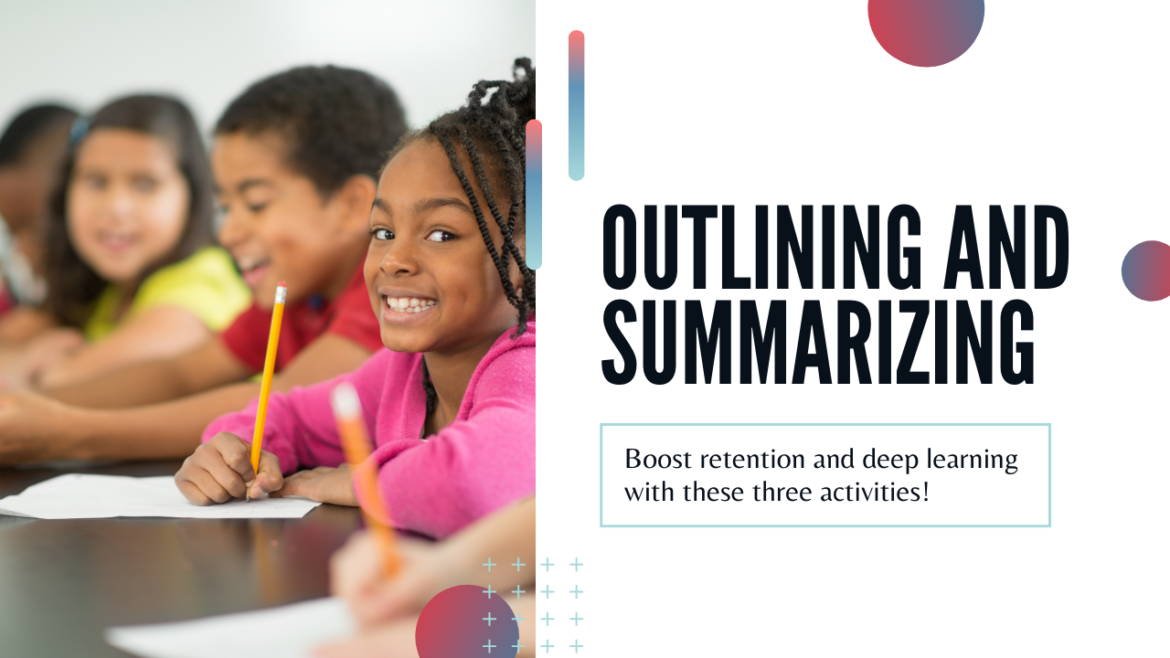Wish you could empower and engage students with strategies that lead to long-term information retention? Outlining and summarizing is a strategy that assists students in learning new material and retaining it. Once students learn to read a text, watch a video, outline, and summarize, they will remember. As a deep learning strategy, outlining and summarizing assists students in connecting ideas. According to researchers, deep learning happens when learners make a conscious and explicit effort. That effort involves connecting “new knowledge to relevant concepts they already have.”
Outlining and Summarizing (d=0.62): This deep learning strategy involves students in identifying ideas. They identify the main ideas and render them in one’s own words. The core skill is being able to differentiate between main and supporting ideas.
Source: Visible Learning MetaX database
Let’s look at several deep learning activities you can complete with your students to boost retention using outlining and summarizing. But first, let’s look at the science behind it.
What Helps Us Remember and Retain
A key idea behind outlining and summarizing involves semantic processing or encoding. That is, translating what we experience through our senses into a meaningful connection. This connection, like a story you tell yourself about an event, aids in memory recall. When you outline, putting ideas into your own words, you are engaging in semantic encoding. Semantic encoding is the process of linking data and information to concepts and meanings. This improves understanding and recall.
“Memory is the residue of thought,” says Professor Daniel Willingham. To remember something better:
- Think about it
- Do something with the ideas (draw a diagram or a picture)
- Write notes by hand to improve long-term information retention.
But what does “think about it” mean? Many students have no idea. If the goal is to remember information, you have to do something with it. That makes “thinking” a series of repeated actions that ensure long-term information retention. Want to ensure you never forget the code to your memory safe? Take one of these actions:
- Read aloud, then get feedback from others (Repeated Reading)
- Discuss with others (Classroom Discussion, Reciprocal Teaching, Jigsaw Method)
- Clarify vocabulary and meaning (Vocabulary Programs)
- Jot down important ideas and information (Outlining, Summarization, Concept Mapping)
- Annotate your text, write in the margins (Underlining and Highlighting)
- Interrogate text (ask questions and make a quiz for Retrieval Practice)
“Memories are stored in ensembles of neurons called ‘engram cells’, and successful recall of these memories involves the reactivation of these ensembles. The logical extension of this is that forgetting occurs when engram cells cannot be reactivated. The memories themselves are still there, but if the specific ensembles cannot be activated, they can’t be recalled. It’s as if the memories are stored in a safe but you can’t remember the code to unlock it.”
Source: Dr. Tomás Ryan, associate professor, School of Biochemistry & Immunology, & Trinity College Institute of Neuroscience, Trinity College Dublin
Now, let’s dive in to three activities that use outlining and summarizing to aid in retention.
Activity #1: Create a Reverse Outline
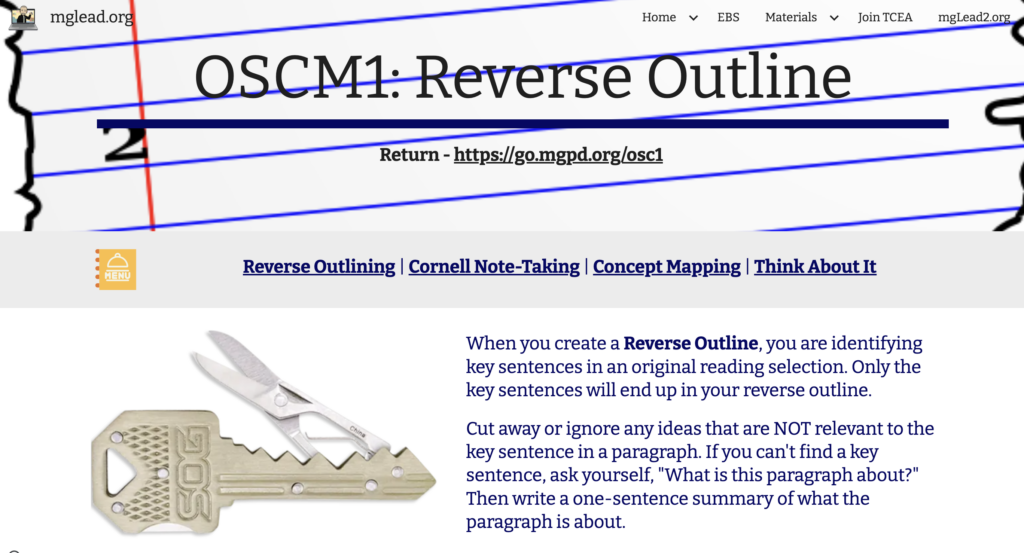
When you create a reverse outline, you are selecting key ideas in a reading selection. Only the sentences with key ideas will end up in your reverse outline. Cut away anything that isn’t relevant to the key sentence in a paragraph. If you can’t find a key sentence, ask yourself, “What is this paragraph about?” Then write a one-sentence summary of it. You can find some digital tools to support you, but one you could take advantage of is ChatGPT. If you have access to ChatGPT, you can ask it to make a reverse outline for you.
Example ChatGPT Prompt: Create a reverse outline of the following passage with Roman numerals, main ideas, and supporting details: Then paste in the text to be outlined.
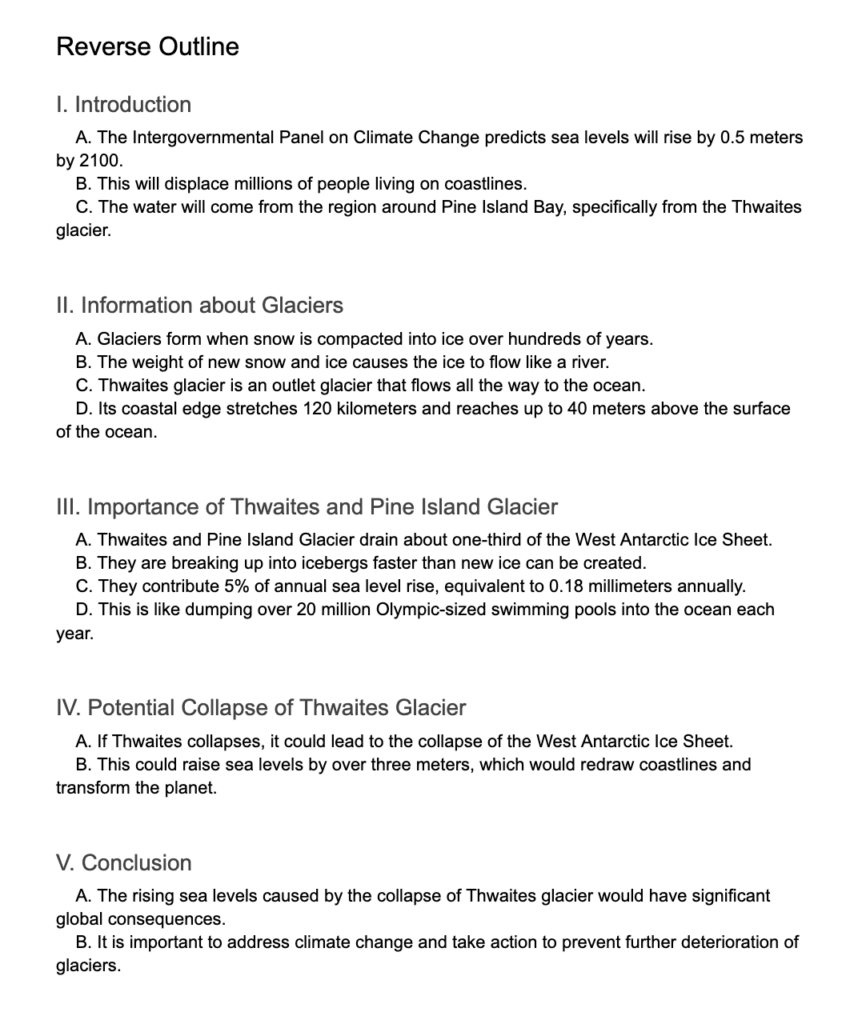
Activity #2: Cornell Note-Taking
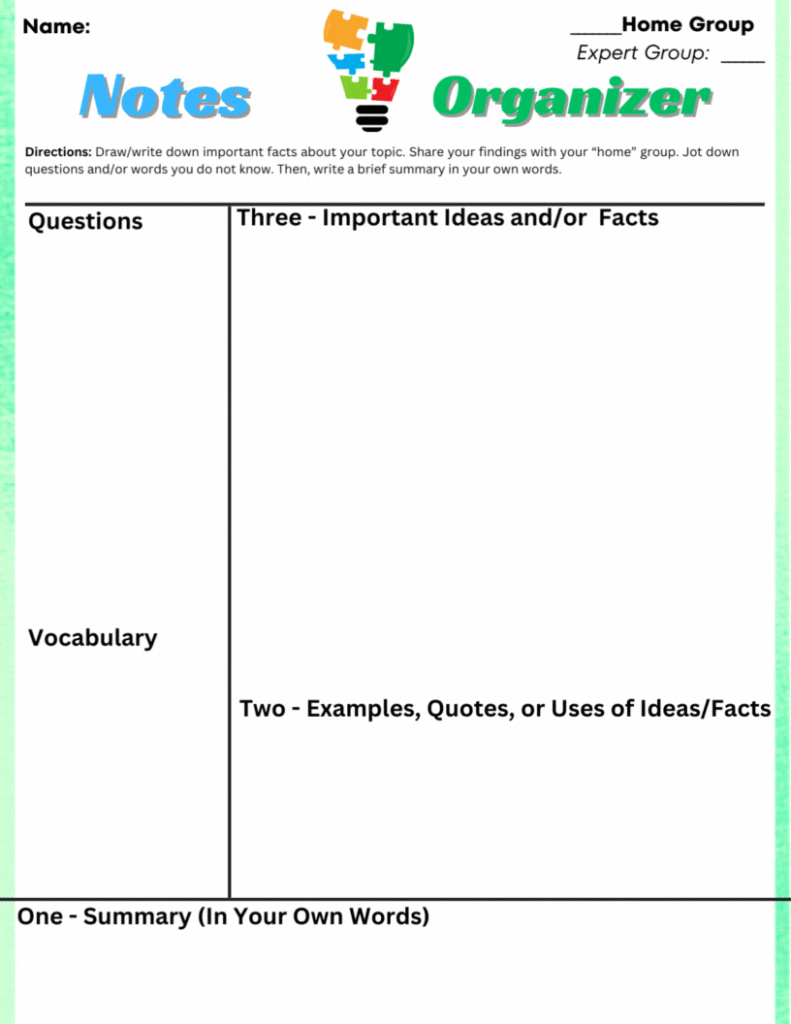
You may already be familiar with the Cornell Note-Taking method. The flexibility of the Cornell Notes format makes it one of the most important tools you can share. The Cornell Note-Taking process is straightforward:
- Record your notes in your own words. Make an outline, draw a concept map, or a sketch a picture (sketch note).
- Reduce your notes. Work on the cue column. Identify keywords and vocabulary. Write questions that trigger recall of ideas or use them to quiz yourself.
- Recite and Reflect. Summarize key ideas from the cue section, drawing conclusions.
- Review your notes. Spread out your study over several days or weeks rather than cramming them right before an event (e.g. test, quiz, project).
What’s more, there are many templates for Cornell Note-Taking online:
Paper versions
Google Docs
Microsoft OneNote
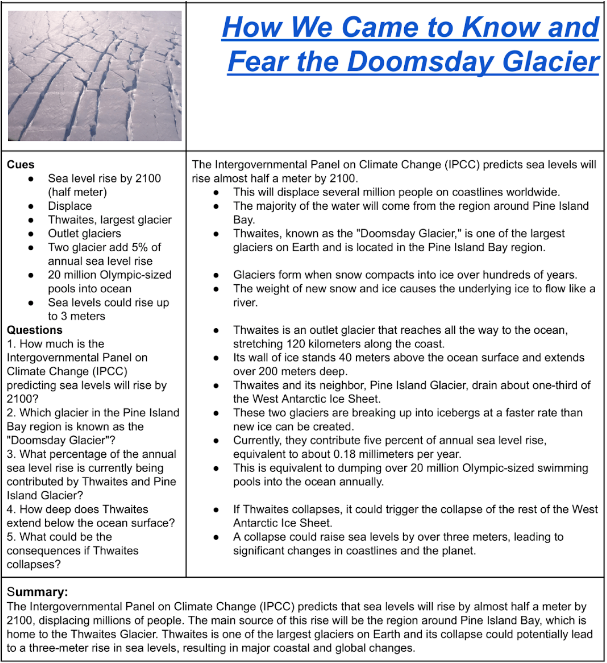
Activity #3: Concept Mapping
Concept maps like diagrams, mindmaps, and semantic webs can help you seize the chaotic energy of your mind by tapping into your generative power. You seek to reflect the constellations of thought and map them. There are benefits to this thought cartography. In an online compendium of research, the benefits of concept mapping are clear. These strategies have a thought-mapping component that requires students to recall information.
As I create a concept map, an outline, or take notes, I am full of questions that may include:
- Should I build my understanding around this main idea?
- Is this the main idea? What are the supporting or related concepts?
- How do the main idea and the supporting ideas connect to what I already know?
- How can I best represent or arrange ideas to reflect what I know and what I am learning?
This self-interrogation is ever-present and appears in all the strategies that involve diagramming and concept mapping. Paste in a text selection (200 or so words) to be turned into a concept map into yEd LIVE. yEd LIVE will use ChatGPT to summarize and create the map. Of course, it is more effective if students make the map and connect it to what they know.
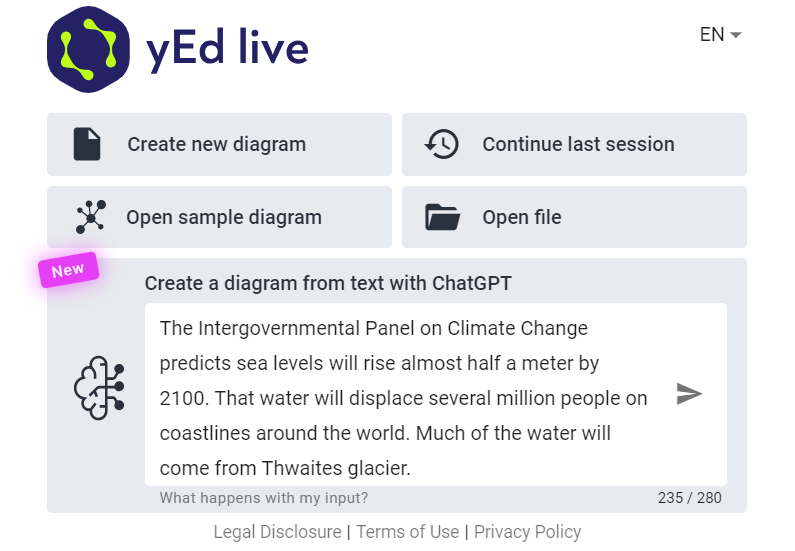
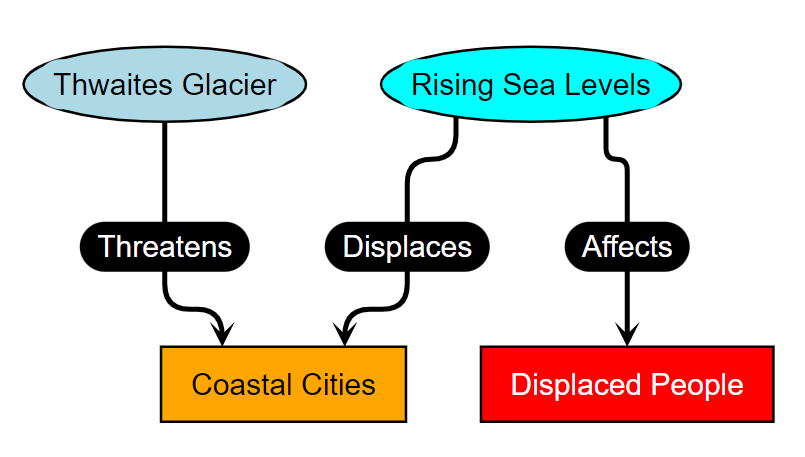
Want to Learn More?
Want to learn more? Here is an infographic that can help you kick off your exploration.
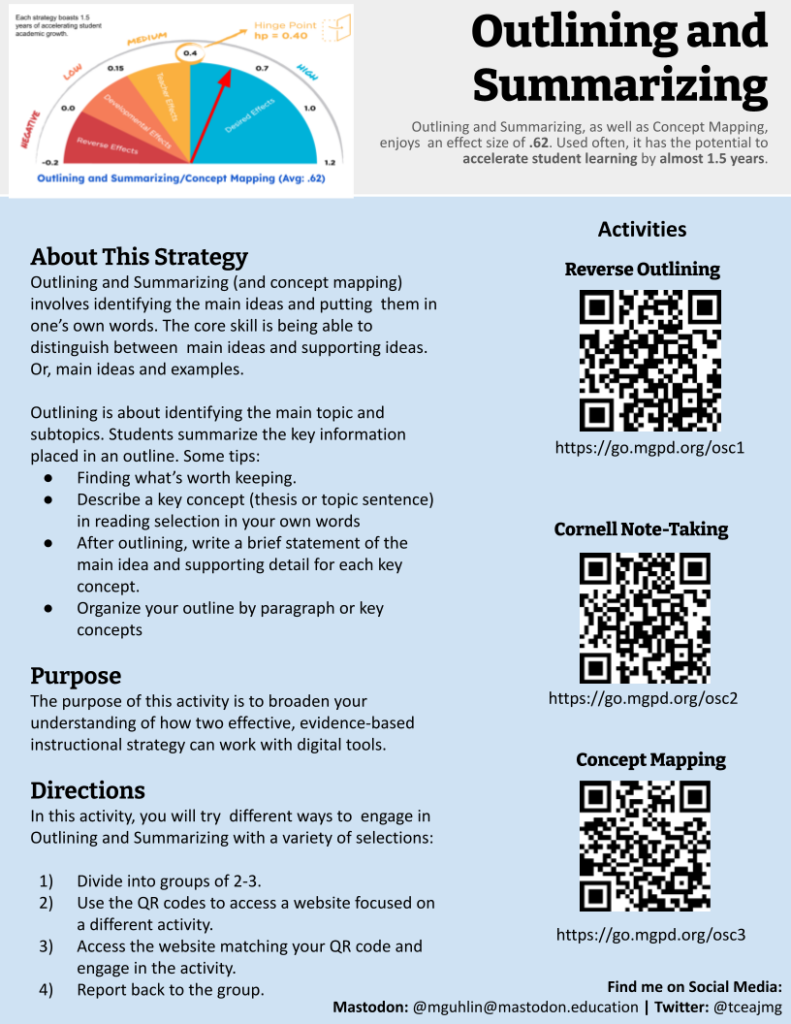
Summarization and outlining are proven ways to help students retain information and learn deeply. These strategies can be used across a variety of subjects and content areas. Which of these activities will you use in your classroom? Leave us a comment to let us know how it goes.

